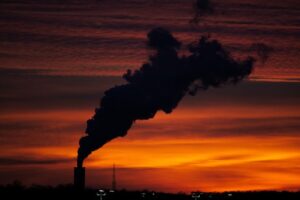Air pollution is a concerning issue that affects our health in various ways. One significant air pollutant is nitrogen dioxide (NO2), which has been linked to adverse health effects. However, there is conflicting evidence regarding its association with breast cancer risk. In this study, researchers from Department of Prevention Cancer Environment, Centre Léon Bérard, Lyon, France, aimed to understand the relationship between long-term exposure to NO2 and the risk of breast cancer using data from the French E3N cohort study.
The French E3N Cohort Study
The French E3N cohort study is a valuable research initiative that includes a large group of women. For this study, the researchers focused on a subset of the cohort, consisting of 5,222 women diagnosed with breast cancer between 1990 and 2011. They also selected an equal number of matched controls without breast cancer for comparison.
Estimating NO2 Exposure Levels
To assess NO2 exposure, the researchers used sophisticated models to estimate annual mean concentrations of NO2 at the residential addresses of the study participants. They utilized a land use regression (LUR) model to calculate these levels for each year from the recruitment year 1990 through 2011.
Analyzing the Data
To understand the association between NO2 exposure and breast cancer risk, the researchers employed multivariable conditional logistic regression models. These models allowed them to calculate odds ratios (ORs) and their 95% confidence intervals (CIs), taking into account various factors that could influence the results, known as confounders. Additionally, they performed additional analyses using NO2 concentrations estimated by another model called CHIMERE, a chemistry transport model, to validate their findings.
The Link between NO2 Exposure and Breast Cancer Risk
The study’s results showed an interesting connection between long-term exposure to NO2 and breast cancer risk. Overall, the mean NO2 exposure was associated with an increased risk of breast cancer. For each interquartile range (IQR) increase in NO2 levels (LUR: 17.8 μg/m3), the OR in the model adjusted for confounders was 1.09 (95% CI: 1.01-1.18). When the researchers further adjusted the model for established breast cancer risk factors, the corresponding OR was 1.07 (95% CI: 0.98-1.15). This suggests that exposure to higher levels of NO2 may be linked to a slightly elevated risk of breast cancer.
Menopausal Status and Hormone Receptor Status
To gain a deeper understanding, the researchers analyzed the data based on menopausal status and hormone receptor status. For postmenopausal women, the results were comparable to those for all women, indicating a potential association between NO2 exposure and breast cancer risk. However, among premenopausal women, no significant association was observed. When the researchers considered estrogen receptor status, they found that the OR of estrogen receptor positive breast cancer was 1.07 (95% CI: 0.97-1.19) in the fully adjusted model. This suggests that the impact of NO2 exposure may be more pronounced in certain subgroups.
Consistent Findings from Different Models
The researchers conducted additional analyses using the CHIMERE model, and they found slight differences in OR estimates compared to the LUR model. However, the overall pattern remained consistent, reinforcing the initial findings. This indicates that the increased risk of breast cancer associated with long-term exposure to NO2 air pollution is robust and not dependent on a specific model used for estimation.
Conclusion
The findings from the French E3N cohort study provide important insights into the potential link between long-term exposure to nitrogen dioxide and breast cancer risk. The study suggests that higher NO2 exposure levels may be associated with a slightly increased risk of breast cancer, particularly among postmenopausal women.
However, it’s crucial to remember that this study is just one piece of the puzzle, and more research is needed to fully understand the complex relationship between air pollution and breast cancer risk. Reducing air pollution levels remains essential for overall public health, and efforts to create cleaner air can potentially contribute to improved breast cancer outcomes. As we continue to learn more, policymakers and communities can work together to promote a healthier environment and support breast cancer prevention and treatment efforts.







